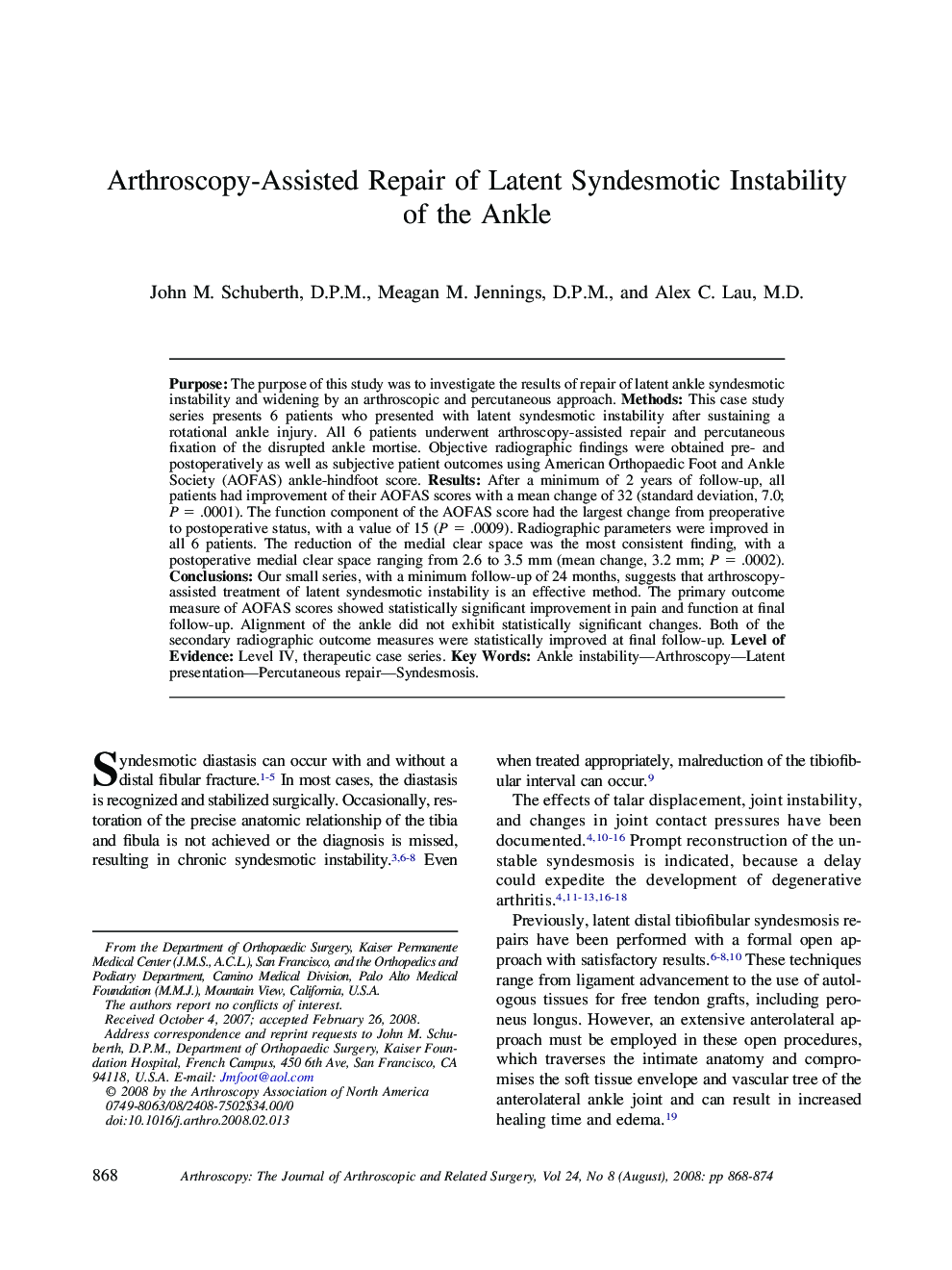| Article ID | Journal | Published Year | Pages | File Type |
|---|---|---|---|---|
| 4047129 | Arthroscopy: The Journal of Arthroscopic & Related Surgery | 2008 | 7 Pages |
Purpose: The purpose of this study was to investigate the results of repair of latent ankle syndesmotic instability and widening by an arthroscopic and percutaneous approach. Methods: This case study series presents 6 patients who presented with latent syndesmotic instability after sustaining a rotational ankle injury. All 6 patients underwent arthroscopy-assisted repair and percutaneous fixation of the disrupted ankle mortise. Objective radiographic findings were obtained pre- and postoperatively as well as subjective patient outcomes using American Orthopaedic Foot and Ankle Society (AOFAS) ankle-hindfoot score. Results: After a minimum of 2 years of follow-up, all patients had improvement of their AOFAS scores with a mean change of 32 (standard deviation, 7.0; P = .0001). The function component of the AOFAS score had the largest change from preoperative to postoperative status, with a value of 15 (P = .0009). Radiographic parameters were improved in all 6 patients. The reduction of the medial clear space was the most consistent finding, with a postoperative medial clear space ranging from 2.6 to 3.5 mm (mean change, 3.2 mm; P = .0002). Conclusions: Our small series, with a minimum follow-up of 24 months, suggests that arthroscopy-assisted treatment of latent syndesmotic instability is an effective method. The primary outcome measure of AOFAS scores showed statistically significant improvement in pain and function at final follow-up. Alignment of the ankle did not exhibit statistically significant changes. Both of the secondary radiographic outcome measures were statistically improved at final follow-up. Level of Evidence: Level IV, therapeutic case series.
